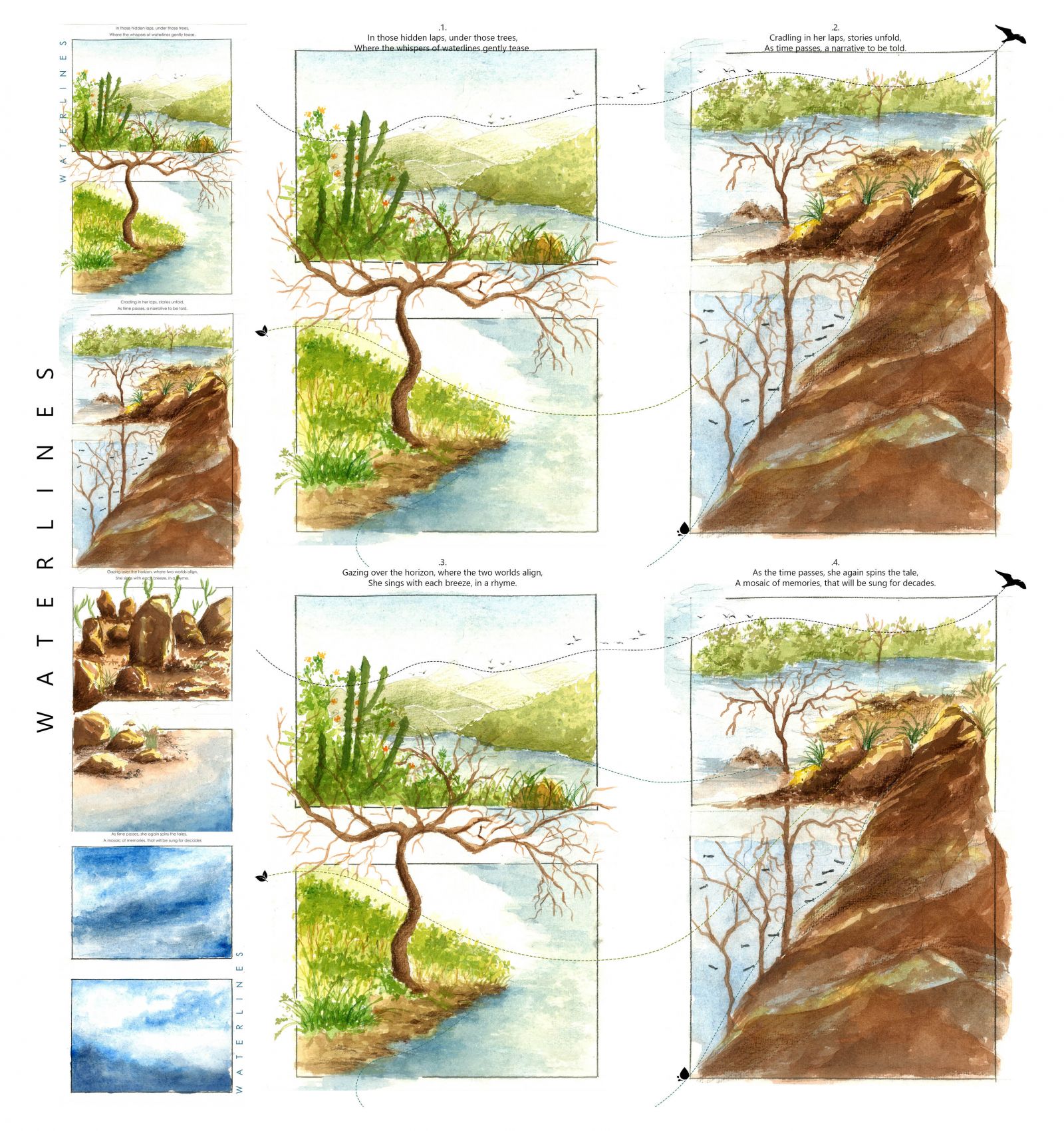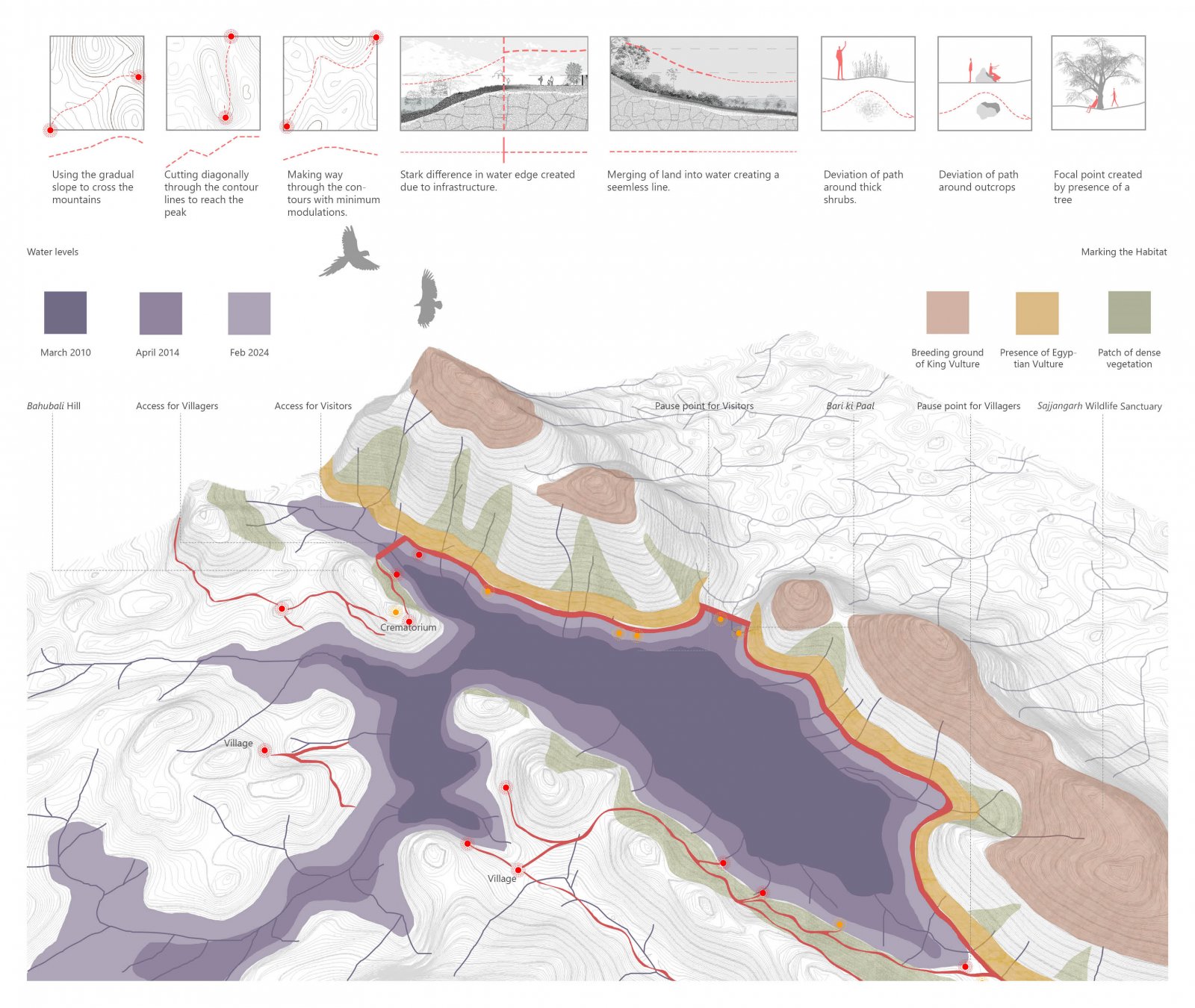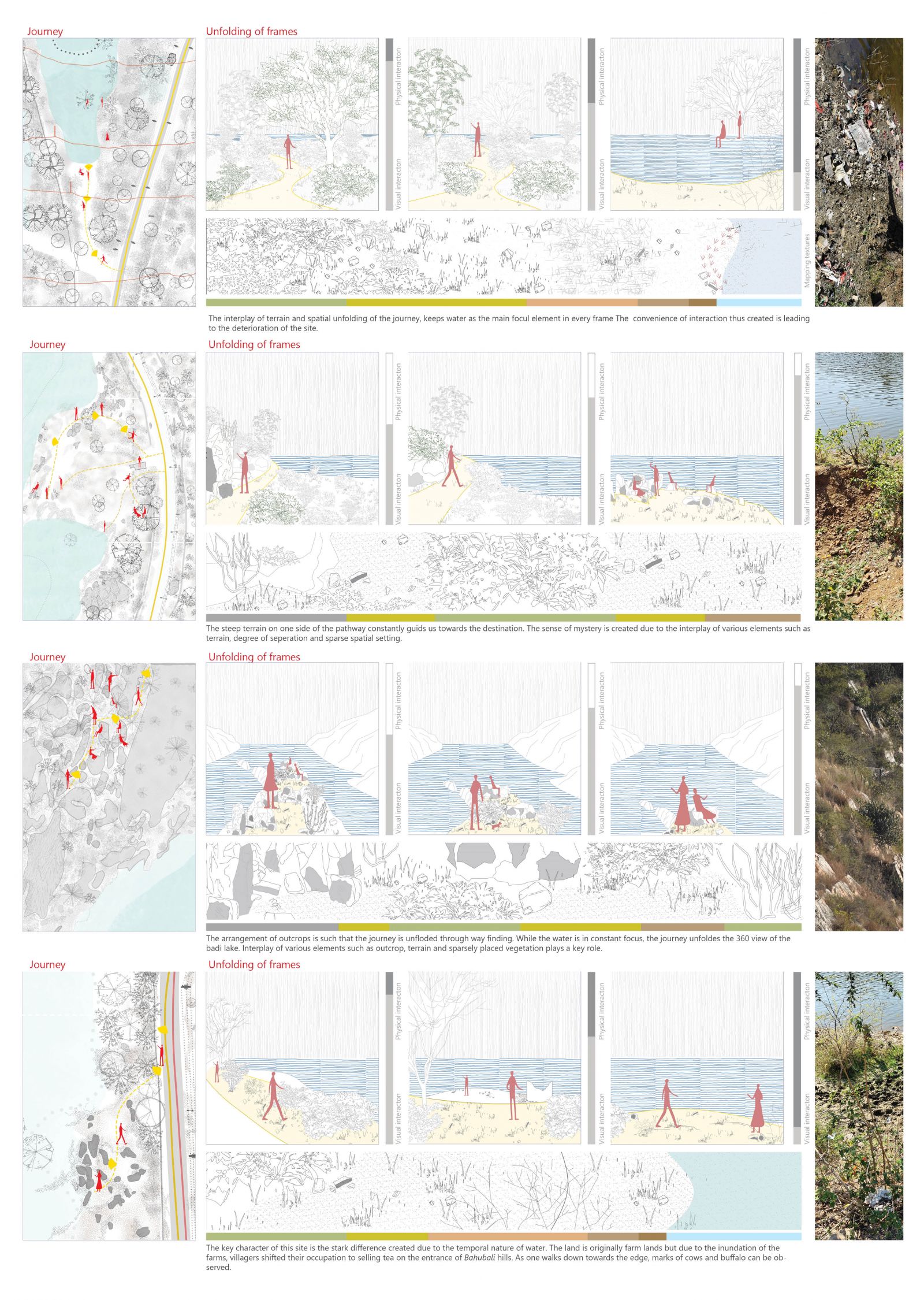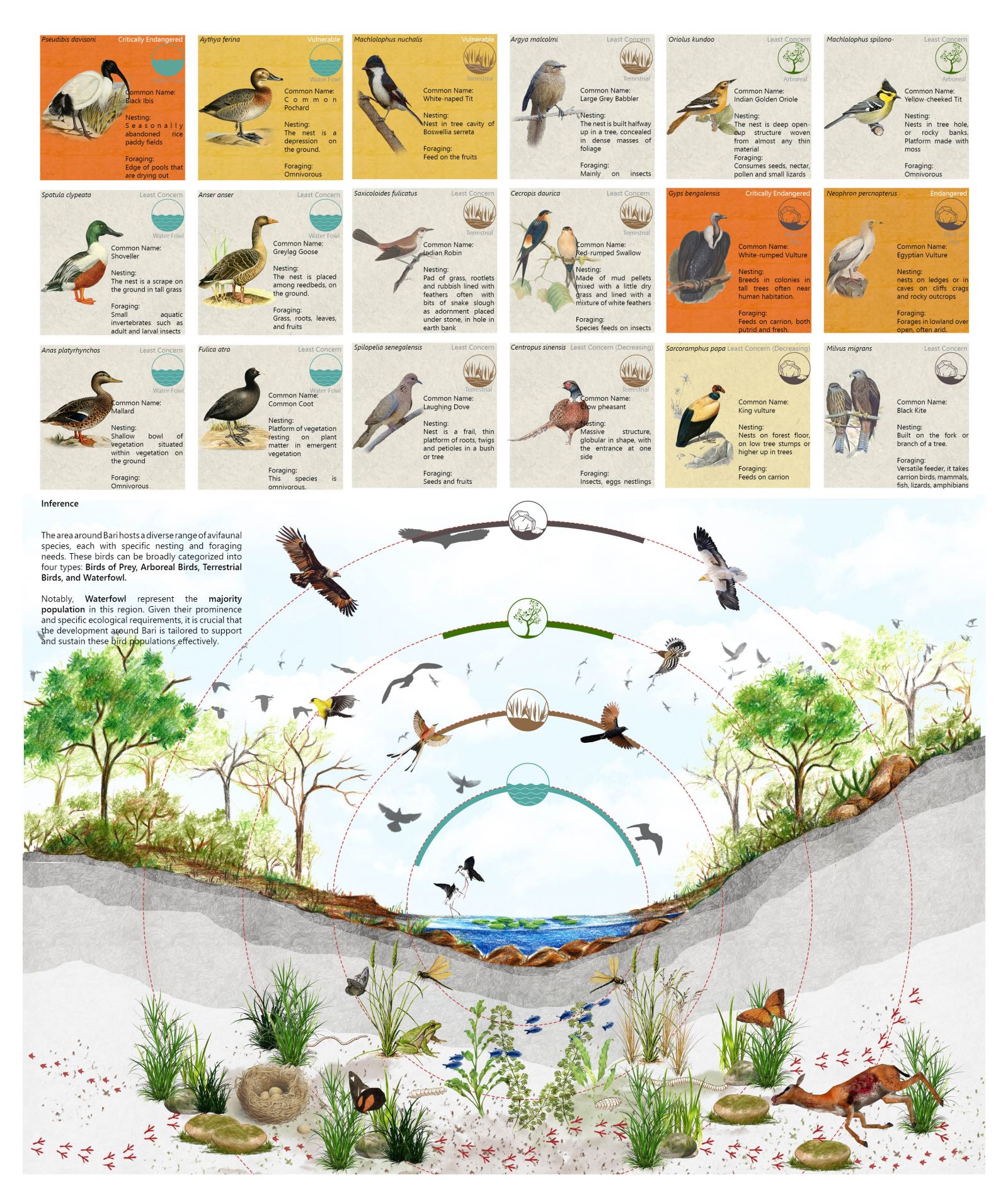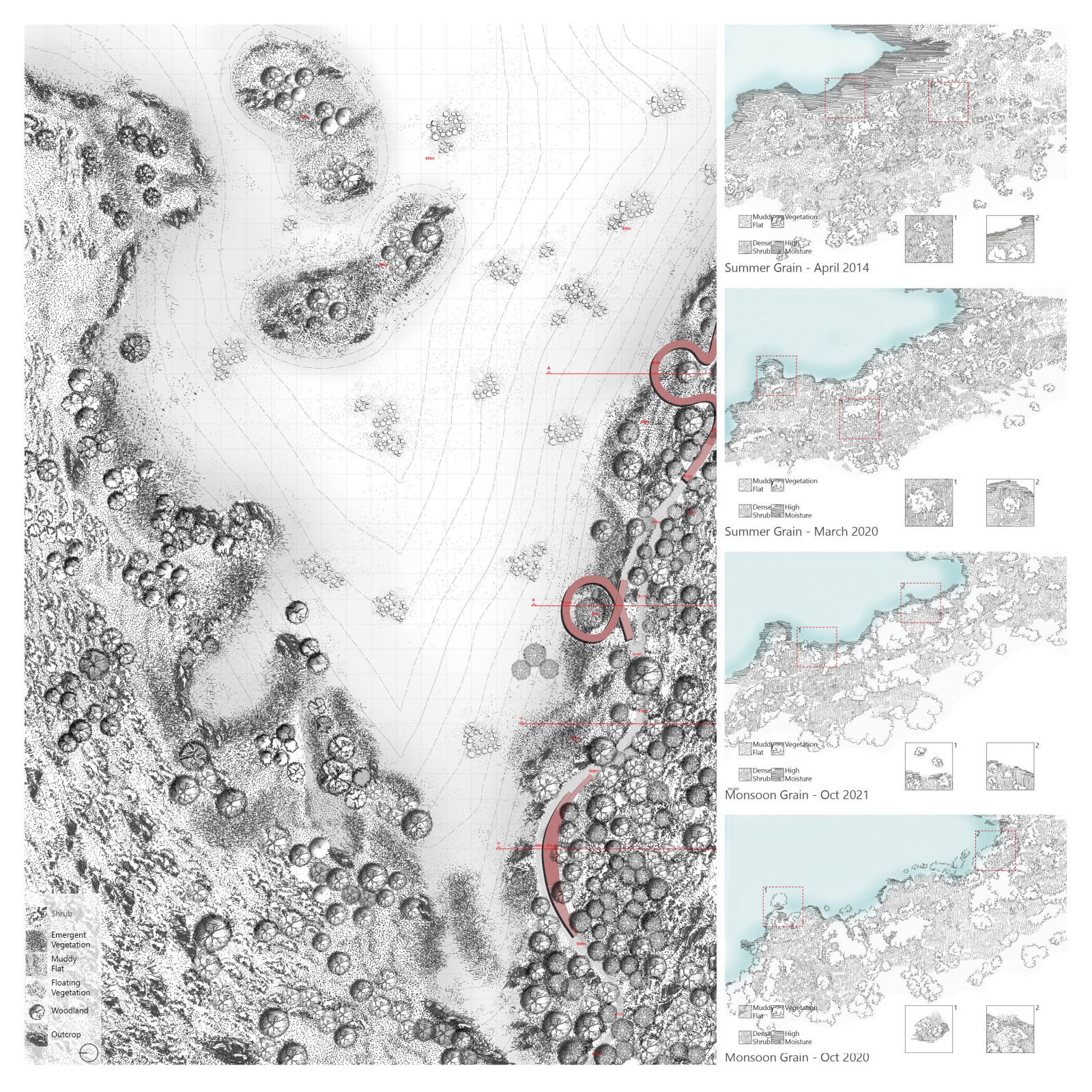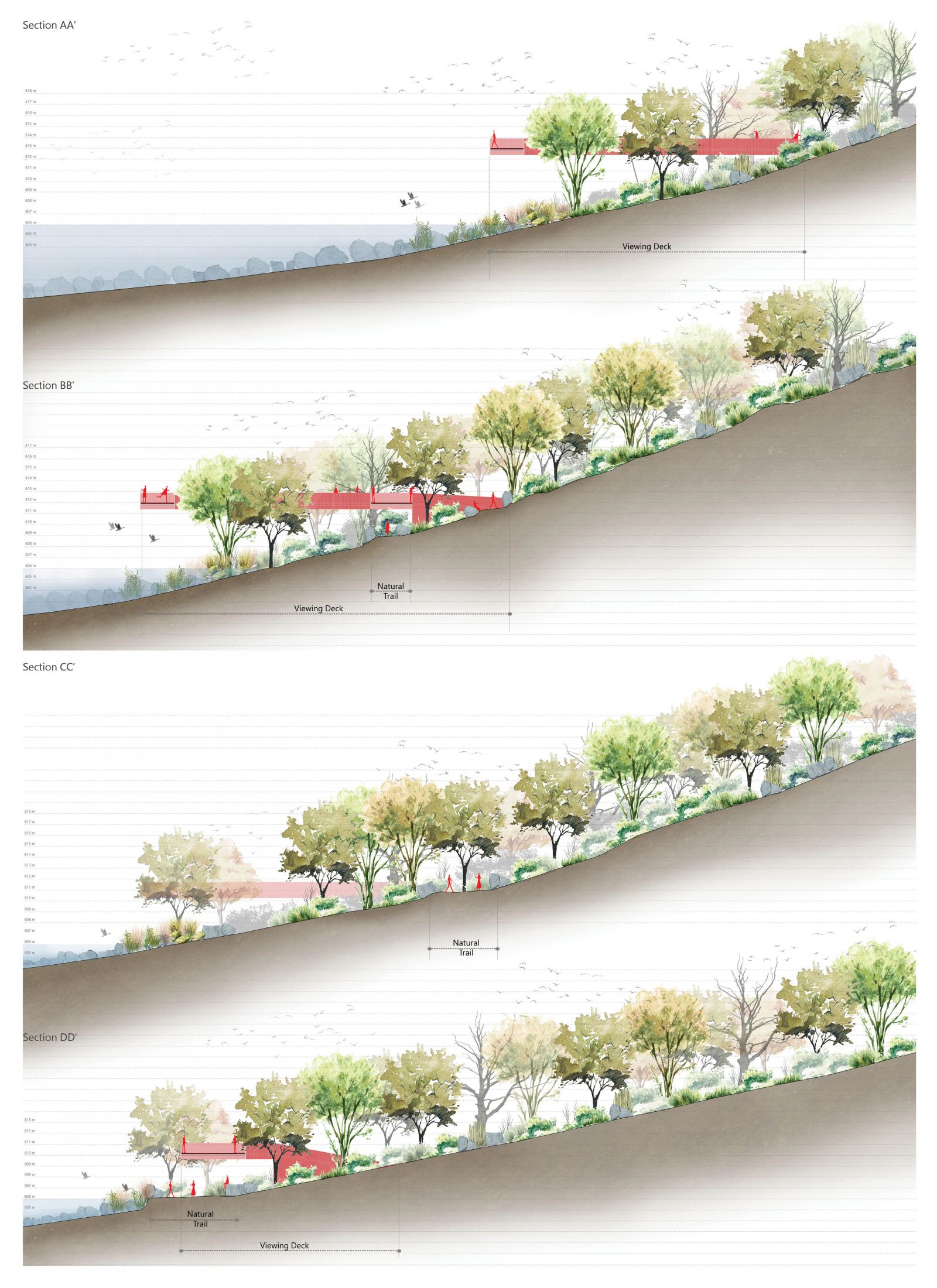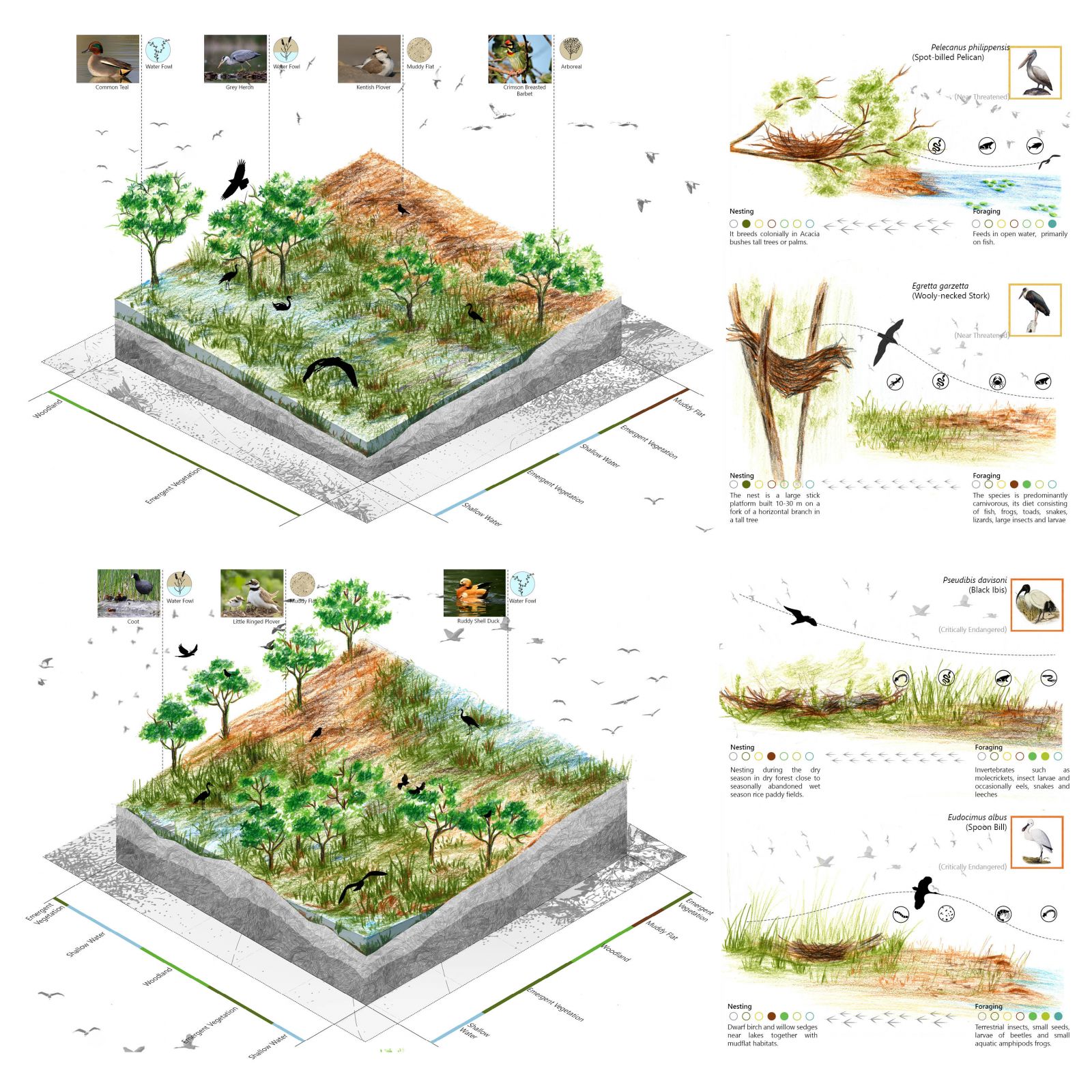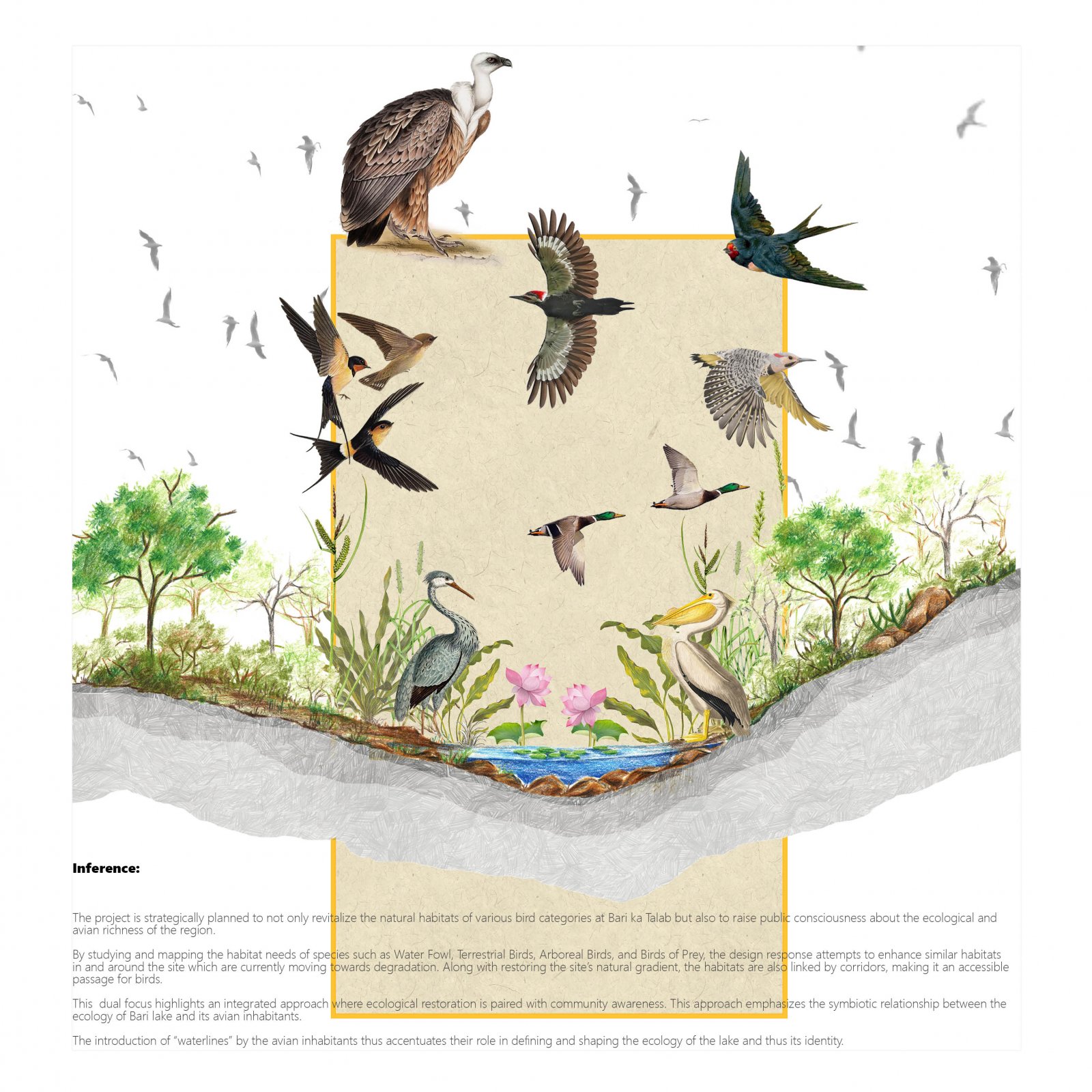Your browser is out-of-date!
For a richer surfing experience on our website, please update your browser. Update my browser now!
For a richer surfing experience on our website, please update your browser. Update my browser now!
Overview:
Located at the intersections of various streams, Badi ka Talab is the physical manifestation of intersection. Giving rise to various other interactions, Badi is a dynamic piece of architecture. This dynamic nature of Badi is leading to formation of various boundaries, zones, movements and lines.
Ecological boundary and habitat:
This fluidity gives rise to various ecological zones, each marked by distinctive features such as individual trees, rock formations, and varying vegetation density. All these lines when combined together define Badi ecologically (waterlines). When these ecological intersections fit into a particular avifauna requirement of nesting, roasting or foraging, it gives rise to various faunal habitats with a peculiar set of ecological lines. The formation of these habitats is primarily influenced by moisture levels, leading to diverse plant life that supports various faunal communities.
Avifaunal categorisation:
Categorizing these avifauna according to proximity with water, there are four major groups formed : Water fowl, Terrestrial birds, Arboreal birds and Predators birds. All of these avifaunal groups are located at a particular distance from water. For example, the water fowls are a group of avifauna that nest and roost in either floating vegetation or emergent vegetation. The dense patch of vegetation that houses the terrestrial birds is generally at a higher elevation, located at the intersection of the valley
Conclusion:
The various intersections caused by ecological lines around Badi Ka Talab give rise to various avifaunal habitats. These waterlines when enhanced can lead to regeneration of the existing interdependencies in the ecological system.
